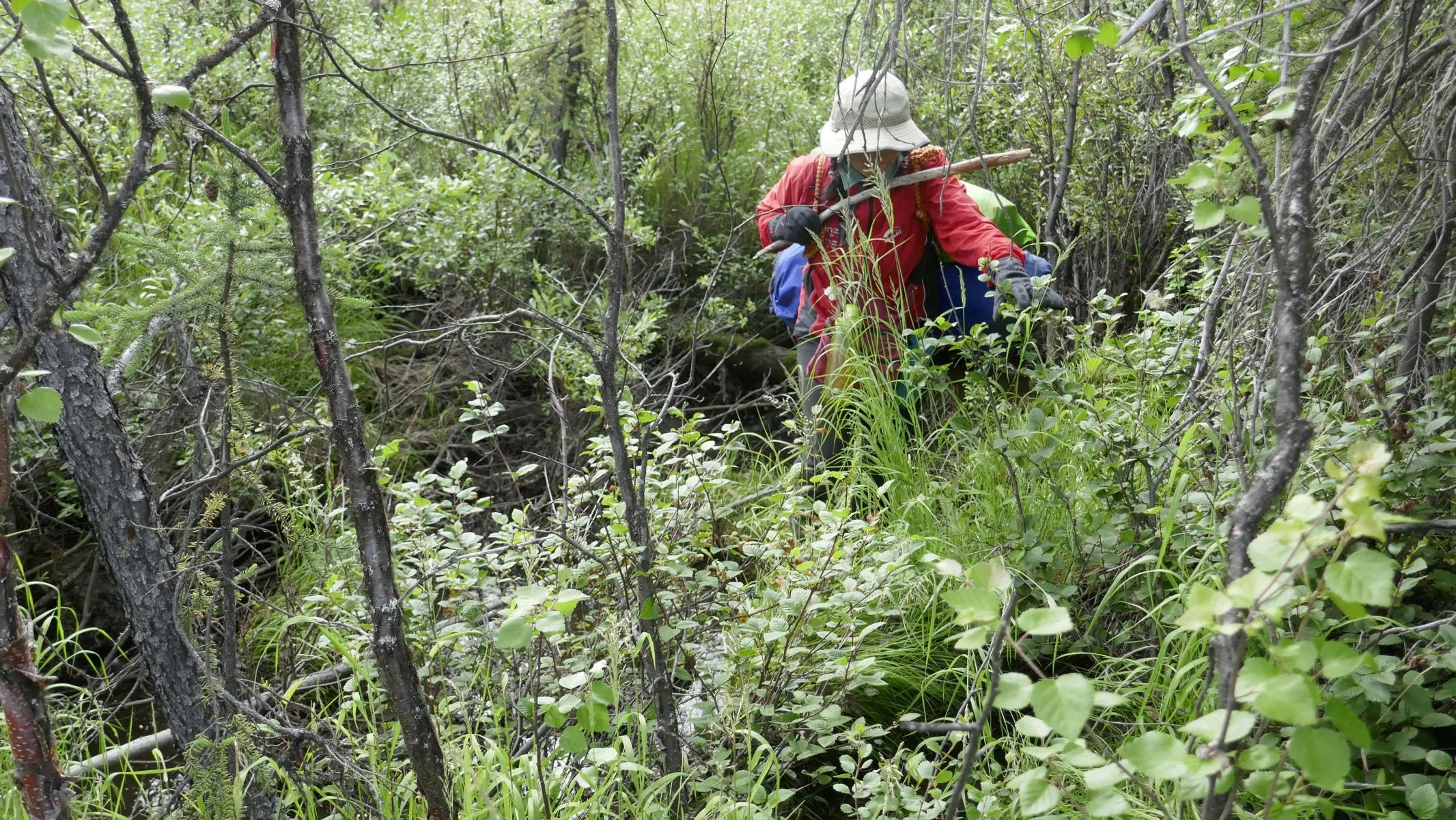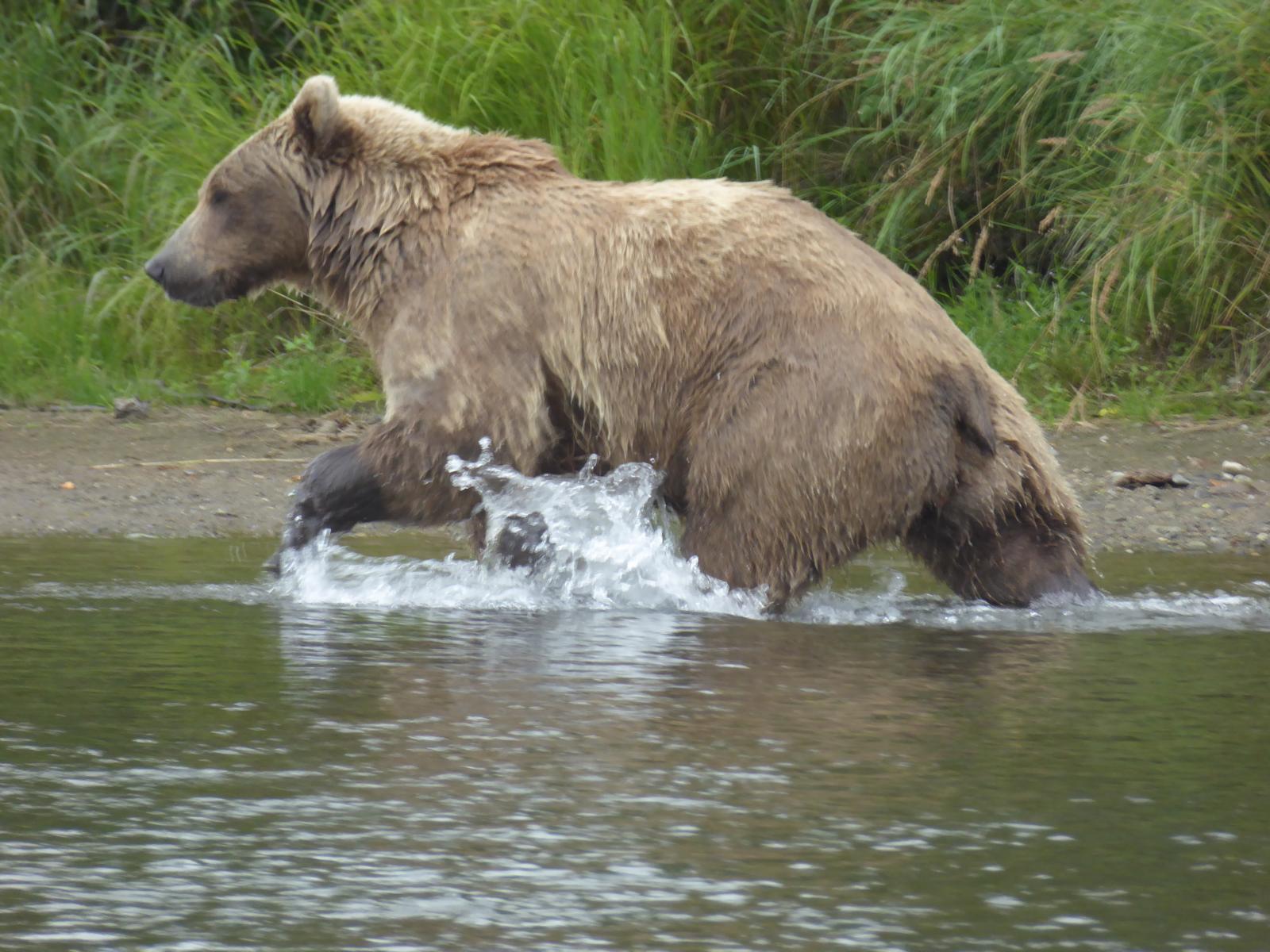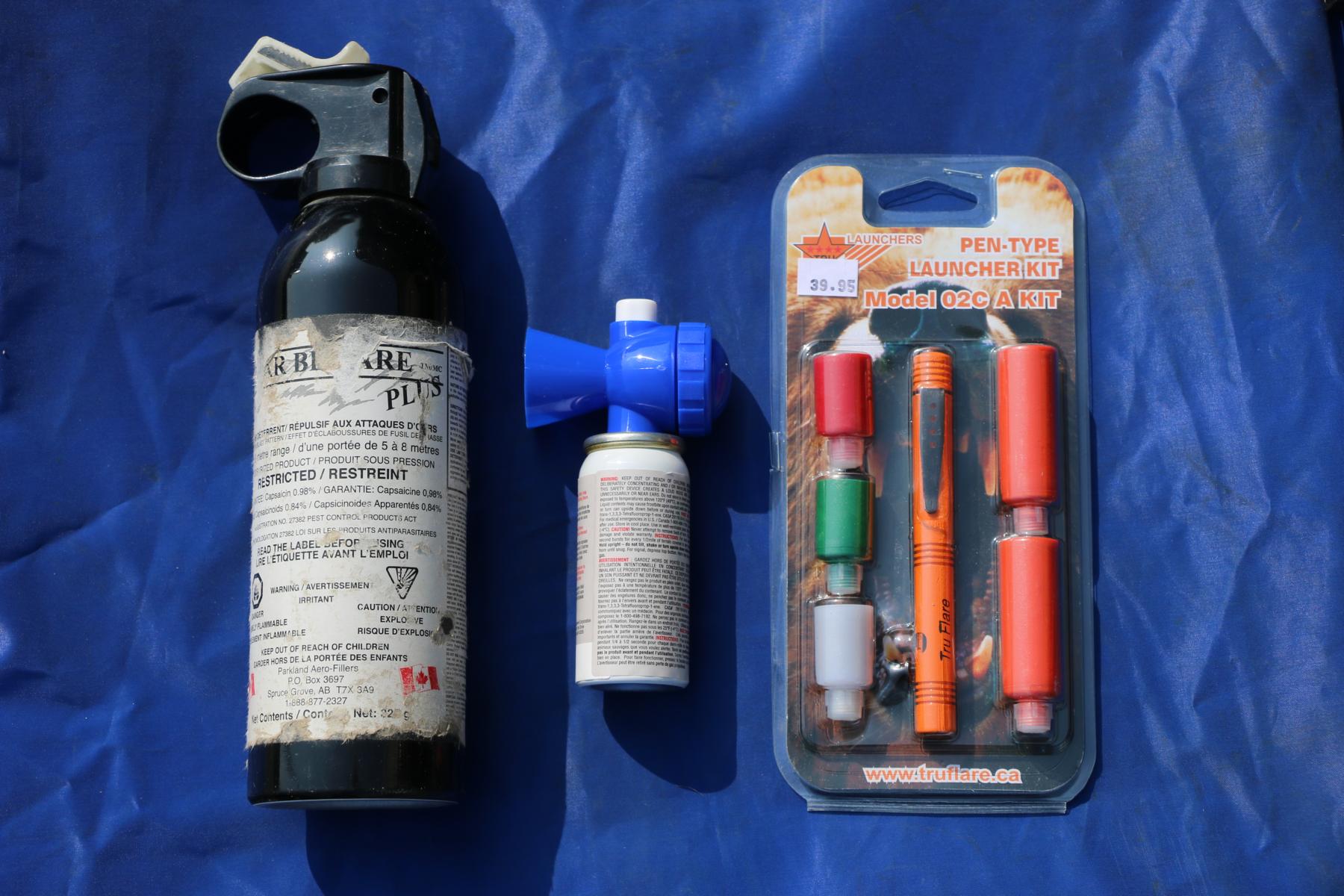Yukon Territory - North Canada, wilderness pure.
In ths terrain we sometimes made only 500 m per hour.
If you follow certain rules you it will be unlikely that you will be attacked by a bear
Boil the water, use chlorine tablets or a water filter.
Not always you will find a camp site as beautiful is this one.
Some useful communication and navigation devices: SPOT 3, Sat phone, Garmin GPS, smart phone, compass.
Cooking over a camp fire is still the most romantic way of cooking.
You should carry at least one of these items with you: Bear spray, air horn or bear banger.
Setting up the tent opposit to Mt. Denali / Alaska.
From Hiking Through the Alps to Surviving in the Wilderness
It has been a jump in the cold water. During our travel through Canada and Alaska Ursula and I spent all in all about a month in the wilderness. We had exciting and extreme experiences and lived through a lot of adventures. We also learned to be humble facing rough nature and wild animals. Looking back the physical, mental and emotional challenges have made us stronger and have also strengthened our partnership. Looking back, we are very glad that we dared to conduct the paddle tours and hikes in DIY-stile (Do It Yourself-stile) and that we left our personal “comfort zone”.
When we started our first rafting tour in July 2019, paddling the Blackstone River for ten days, we had a bit of an uneasy feeling. We both have many years of experience regarding hiking and mountaineering in the Alps, but being alone in the wilderness is in Northern-Canada certainly is something completely different. With this blog we want to encourage other to also try it out and to provide a few hints how to do it.
Where are the differences?
Living in Central Europe one never has a chance to experience real “wilderness” as you are never more than a few kilometers away from the next village or a road and mobile phone coverage is practically everywhere. One usually walks on established trails or marked foot paths and you meet other people behind every corner. In addition, there do not exist any predators who could attack you.
· There are no trails: If you are used to march on established trails the first big difference is that in the wilderness of Canada and Alaska there are no trails (except of some paths made by wild animals leading to the next water source). Therefore, one has to hike through the tense bush often along little creeks or rivers. Marching is much more strenuous and you move much slower. When walking with heavy luggage through the muskeg (arctic permafrost soil covered by soft moss) we sometimes covered not more than 500 m per hour.
· There exist no signposts: You have to rely on your own navigation skills, particular when marching through the tense forest with no horizon and landmark to aim for. You won’t belief how difficult it is to hold your bearing on an uneven terrain in a tense forest. GPS helps of course but you need to have enough electric power to keep it running for several days. In addition, we experienced that our Austrian compass close to the arctic circle had a deviation of up to 20 degrees.
· There are wild animals out there: Unlike in Central Europe there are wild predators (wolves, bears) roaming in the wilderness. They are not only much stronger than we but also have better senses with regard to sight, smell and hearing. Luckily, we are not at the top end of their dietary list and in general they are shy and avoid humans. If one follows the rules which the park rangers trained us an incident should be unlikely. In the last years there were never more than five persons killed by bears in a given year in whole North America (for more details see https://en.wikipedia.org/wiki/List_of_fatal_bear_attacks_in_North_America )
· A secure campsite needs to be found: At the end of your daily section there is no mountain chalet or restaurant waiting for you, but you need to select and establish your own campsite. The key criterium is security: The place where you cook and the storage of the food need to form a triangle of at least 100 m with the place where you sleep. Other criteria are availability of firewood and water, protection against wind as well safety from inundation.
· You have to carry all the things you need for your survival: In the wilderness there is no possibility to purchase anything. There needs to be careful planning what regard to equipment, clothes, and food. What is essential and what can you still carry? Experience shows that every extra kilo slows you down and makes you more tired. Therefore, it is important to find a compromise between what is needed and what you will be able to carry.
· There is no mobile phone coverage: In Central Europe we are meanwhile used that with our mobile phone we can call from every spot in the country. In the wilderness it is different: Your only connection to the outside world might be a satellite phone or a radio.
· We need to completely rely on our own: Although you might meet other people in the wilderness you need to be prepared to manage everything on your own. That means if something goes wrong there is only you who can get yourself out of the mess. On the other hand, we really enjoyed to be completely alone in solitude and to hear nothing but the sounds of nature.
All that might sound quite scary and menacing. Never the less it’s worth to try. The rewards are intensive experiences and adventures, breathtaking encounters with animal, a feeling of satisfaction and inner calm, and the experience of going back to your own roots.
A Few Practical Hints
Having spent a month in the wilderness certainly has not made Ursula and myself to outdoor and survival specialists. However, we now already feel much safer and more competent when going into the wild and therefore want to share a few advices with you and tell you about some mistakes we made. Beyond that there are plenty of survival books where one can learn the basics. In any case a careful preparation is key for surviving in the wilderness.
· Communication / Satellite Phone: If you do not want to be a complete purist it is advisable to take one or two communication devices with you in order to mobilize help in case something goes wrong. As our life line we use a Iridium-Satellite telephone and a SPOT 3 (www.findmespot.com/en/index.php?cid=100) A good alternative also is inReach (https://explore.garmin.com/en-US/inreach/) . When paddling the Blackstone River our sat phone (due to our own fault) did not function. It was not a comfortable feeling to be without communication when you are more than 50 km away from the next road.
· Power Supply: Take a sufficient number of batteries, power packs, recharging devices and cables with you (probably a solar panel might be useful). At the end of our 10-day trip down the Blackstone River we ended up with having exhausted nearly all the power of our last functioning GPS device.
· Take sufficient Food and water as well as a water filter with you: Carry sufficient supply and calculate for extra days. We had to experience ourselves how it feels when you run out of water and food. Unlike in Central Europe you cannot drink untreated water due to health-threatening parasites. Therefore, either boil it, add chlorine tablets or – as we do – use a water filter.
· Know your equipment: Be sure that you master the electronic devices you carry. I did not use my Garmin for 15 years and had to “re-learn” it in the wilderness.
· The ability to navigate in unknown terrain is key: Bring detailed maps, a compass and at least two independent GPS devices with you (the GPS on your smart phone works perfectly fine even if there is no mobile phone coverage!!). If possible, download maps into your devices. Be aware that the deviation of your compass due to the difference between magnetic and geographic north pole might be quite strong up in the north.
· Travel Light: If you move on foot remember that you have to carry your whole equipment for several days through difficult terrain. Be realistic what you can carry over long distances. Basically, you need to find a compromise between what the essentials you need and what you are able to carry. On our first trip we grossly overestimated ourselves and had to leave behind half of the equipment. It took us five days to eventually recover it.
· Dealing with predators: We participated in several bear safety trainings, which are offered in every national park and always carried a bear spray with us, which is said to be very effective when being attacked. We also always used a bear container to store food and toiletry. If you want to be completely safe then use an electric bear fence to protect your tent during the night. http://www.bigcountrysportinggoods.com/udap-bef-bear-shock-ultra-light-electric-fence-runs-on-2-d-cells-bef/?gclid=EAIaIQobChMIm6zppamX5AIVhtlkCh28Tw_BEAQYAiABEgL3efD_BwE
· Avoid that humans are associated with food: Essentially one should follow a few basic rules. Bears are attracted by the smell of food. Avoid everything which links you with food. Do not carry strongly smelling food and store your food far away from where you sleep (ideally down-winds). We used packed and dried food where one only needs to add boiling water. Cooking place, storage site and the place where you sleep should form a triangle with at least 100 m leg length. All food and toiletry (including toothpaste) needs to be stored in a bear container or hang between two trees.
· In case you encounter a bear DO NOT RUN – that would trigger a hunting instinct. Once we suddenly found ourselves 15 m away of a mother bear with its two cubs marching towards us. We took our paddles and pretended to be very tall. The three bears for a few seconds stood on their hind legs and then changed their course.
· Be realistic about your abilities: Once you are in the wilderness it is only YOU who can bring you out again. An attitude of “nothing will happen anyway” or “everything will work out fine” is not really a good strategy.








